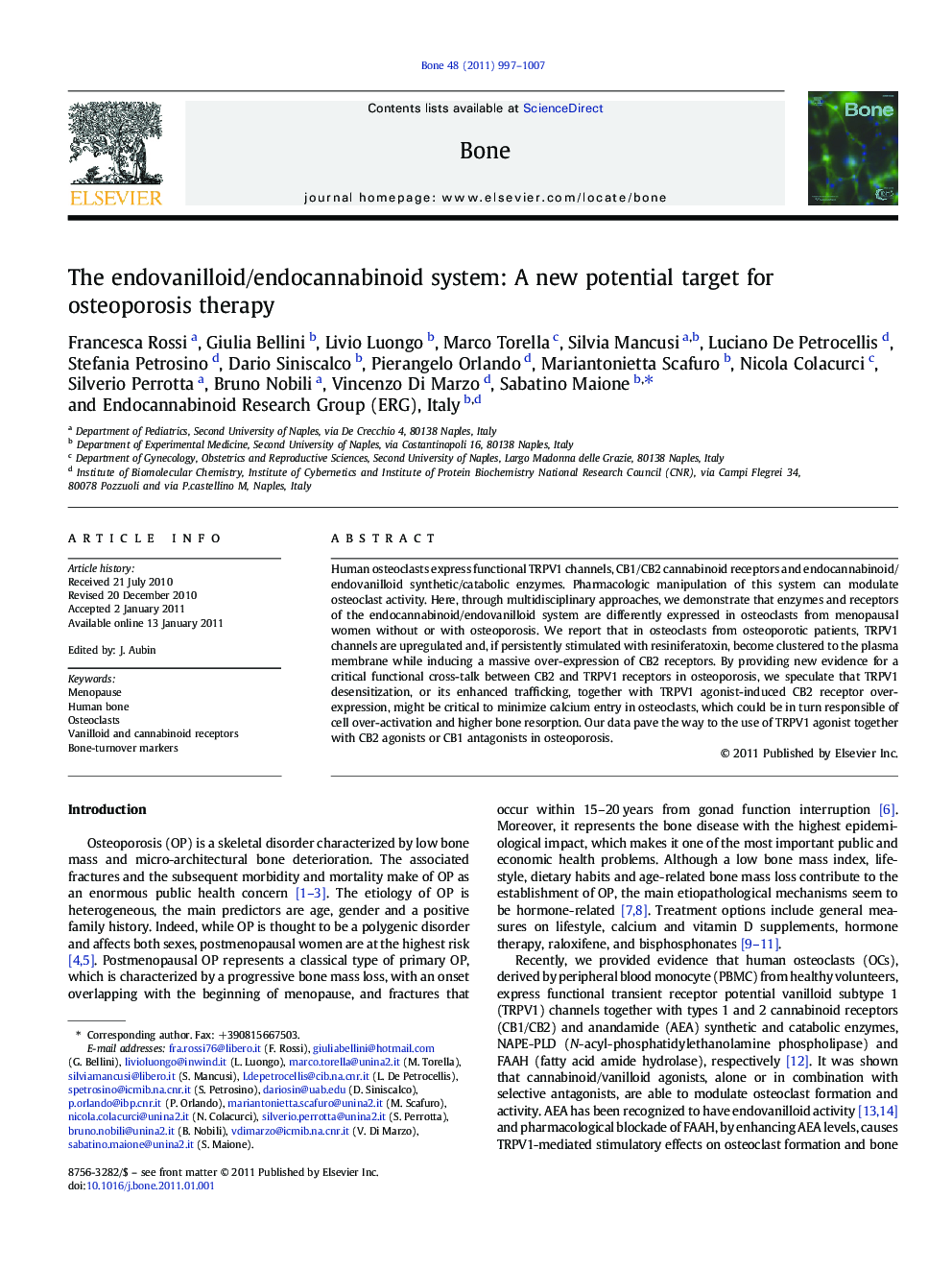| Article ID | Journal | Published Year | Pages | File Type |
|---|---|---|---|---|
| 2780174 | Bone | 2011 | 11 Pages |
Human osteoclasts express functional TRPV1 channels, CB1/CB2 cannabinoid receptors and endocannabinoid/endovanilloid synthetic/catabolic enzymes. Pharmacologic manipulation of this system can modulate osteoclast activity. Here, through multidisciplinary approaches, we demonstrate that enzymes and receptors of the endocannabinoid/endovanilloid system are differently expressed in osteoclasts from menopausal women without or with osteoporosis. We report that in osteoclasts from osteoporotic patients, TRPV1 channels are upregulated and, if persistently stimulated with resiniferatoxin, become clustered to the plasma membrane while inducing a massive over-expression of CB2 receptors. By providing new evidence for a critical functional cross-talk between CB2 and TRPV1 receptors in osteoporosis, we speculate that TRPV1 desensitization, or its enhanced trafficking, together with TRPV1 agonist-induced CB2 receptor overexpression, might be critical to minimize calcium entry in osteoclasts, which could be in turn responsible of cell over-activation and higher bone resorption. Our data pave the way to the use of TRPV1 agonist together with CB2 agonists or CB1 antagonists in osteoporosis.
Research Highlights► Here we confirm a role for the endovanilloid/endocannabinoid system in osteoporosis. ► We find an increased TRPV1 channel expression. ► Persistent TRPV1 stimulation increases CB1 and CB2 receptor expression. ► Endovanilloid/endocannabinoid system may be a new target for osteoporosis treatment.
